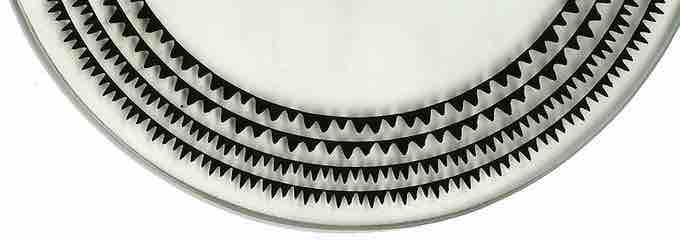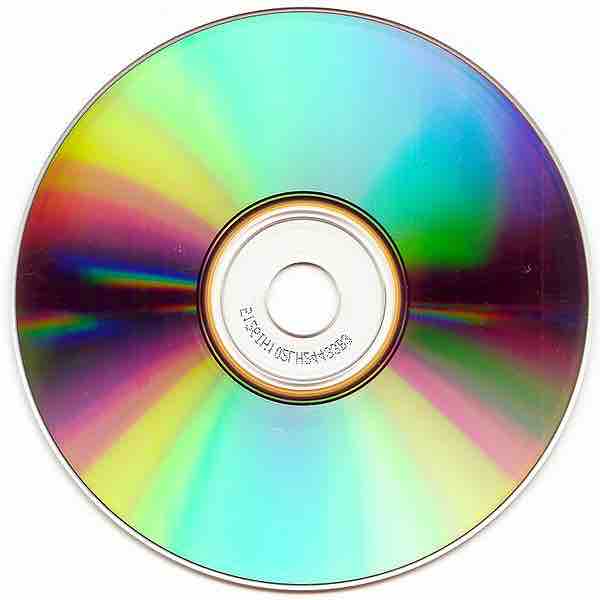Overview
Compact disks (CDs) and digital video disks (DVDs) are examples of optical discs. They are read in an optical disc drive which directs a laser beam at the disc. The reader then detects whether the beam has been reflected or scattered.
Function of Digital Discs
Optical discs are digital storing media. They can store music, files, movies, pictures etc.. These discs are flat, usually made of aluminum, and have microscopic pits and lands on one of the flat surfaces (as shown in ). The information on these discs are read by a computer in the form of binary data. First, a laser beam is shot at the disc. If the beam hits a land, it gets reflected back and is recorded as a value of 1. If the beam hits a pit, it gets scattered and is recorded as a value of zero.

Early Version of an Optical Disc
In this early version of an optical disc, you can see the pits and lands which either reflect back light or scatter it.
These microscopic pits and lands cover the entire surface of the disc in a spiral path, starting in the center and working its way outward. The data is stored either by a stamping machine or laser and is read when the data is illuminated by a laser diode in the disc drive. The disc spins at a faster speed when it is being read in the center track, and slower for an outer track. This is because the center tracks are smaller in circumference and therefore can be read quicker.
These pits also act as slits and cause the light to be diffracted as it is reflected back, which causes an iridescent effect. This explains the rainbow pattern that you see on the back of a CD, as shown in .

Compact Disc
The bottom surface of a compact disc showing characteristic iridescence.